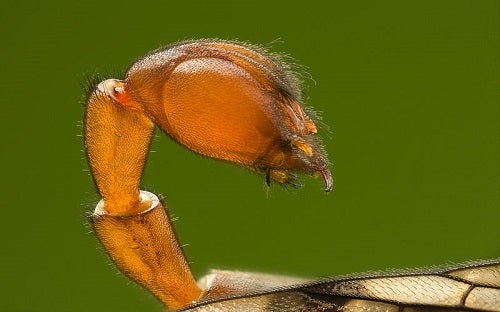
It’s easy to see how the scorpion fly got its name. The giant “stinger” at the back curls up just like the tail of a scorpion. The good news is, that’s not a stinger. Still, I would avoid touching it, if I were you.
The scorpion fly is probably a common sight to Europeans, especially during summer. It’s not a particularly beneficial fly. Although it does eat pest insects, it’s a scavenger and not a hunter. The only time it risks going after live prey is when that prey is already caught in a spider’s web.
The fly does no harm, but this is not the impression one gets when looking at it. The similarity between its back end and that of a scorpion is striking. It’s possible that the fake stinger wards off would-be predators, but it could be another one of those very strange biological coincidences that we sometimes see. The tail does ward off some humans, who are understandably leery of grabbing something that looks like a scorpion.

Fear not. But also touch not. The curled up “tail” and the bulb are actually mating organs. At the very end of the tail—at least for male scorpion flies—are “claspers.” These do exactly what they sound like they do. They grab onto the female during mating while the rest of the genitalia do their thing. Why the male would want to grab onto a female is anyone’s guess, since the scorpion fly is one of those disagreeable species in which it is common for the female to eat the male if she’s in a bad mood. To dissuade her, he offers her a big clump of his saliva to eat instead.
So if a scorpion fly happens to land on your hand and lower its “stinger” towards you, don’t worry. It just likes you. Enjoy the saliva.